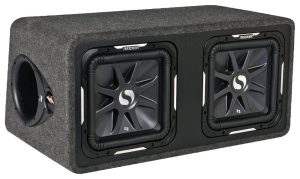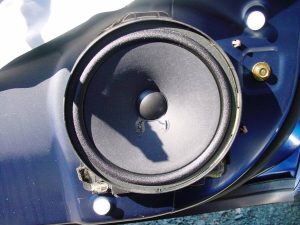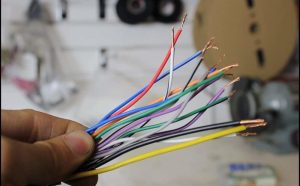Embarking on a musical journey within the confines of my car has always been a passion. The vibrant melodies, the crisp highs, and the rhythm of the beats are enough to elevate any drive. However, it wasn’t until I introduced a subwoofer to my car stereo system that I truly felt the ground-shaking magic of bass. As a fellow enthusiast, I found myself pondering a crucial question: “How long do subwoofers last?” Today, join me in unraveling the secrets behind the lifetime of these audio powerhouses, as we delve into personal experiences, expert insights, and tips to make your subwoofer last longer.
Contents
The Lifespan of a Subwoofer
To grasp the essence of subwoofer longevity, it’s imperative to comprehend the factors that influence their lifespan. A subwoofer, like any other electronic device, is subject to wear and tear, yet its longevity can vary widely based on several key considerations.
Defining the Average Lifespan: On average, a well-maintained subwoofer can endure for approximately 5 to 15 years. This range is broad, considering the myriad factors contributing to a subwoofer’s longevity.
Factors Influencing Longevity:
- Build Quality and Materials: The construction and materials used in a subwoofer play a pivotal role in its durability. Premium materials often result in a more robust and long-lasting audio component.
- Power Handling Capabilities: Understanding a subwoofer’s power handling capabilities is paramount. Operating within the recommended power limits is crucial to preventing premature wear and potential damage.
- Frequency and Usage Patterns: The frequency and intensity at which a subwoofer operates, coupled with usage patterns, significantly impact its lifespan. Excessive strain from continuous high volumes or extreme frequencies can expedite wear and tear.
- Installation and Maintenance: Proper installation techniques and regular maintenance routines contribute to the extended life of a subwoofer. Correct placement, secure wiring, and routine checks for wear are vital components of a longevity strategy.
Personal Journey with Subwoofers
My initiation into the realm of subwoofers was driven by a desire for a more immersive audio experience in my car. Let’s explore the steps taken to find the perfect subwoofer for my needs.
My First Encounter: Transitioning from standard car speakers to a system with a dedicated subwoofer was akin to upgrading from black and white to color. The added depth and clarity of the bass transformed every song into an auditory adventure, making each drive a memorable experience.
Choosing the Right Subwoofer:
- Research and Considerations: Thorough research on various subwoofer models, brands, and user reviews was instrumental in making an informed decision. Understanding technical specifications helped narrow down the options.
- Budget-Friendly Options vs. Premium Choices: While budget-friendly options exist, investing in a high-quality subwoofer pays off in terms of both performance and longevity. The build, materials, and advanced features often set premium choices apart.
Prolonging Subwoofer Life
Having found the perfect subwoofer, the focus shifted to ensuring its longevity through proper installation and maintenance practices.
Proper Installation Techniques:
- Placement and Enclosure Considerations: Following manufacturer guidelines for proper placement and enclosure type is crucial for optimal bass response. Strategic placement within the car ensures an immersive audio experience.
- Wiring and Power Considerations: Correctly wiring the subwoofer and matching it with an amplifier that complements its power handling capabilities is crucial. Overpowering a subwoofer can lead to overheating and, ultimately, damage.
Maintenance Tips for Longevity:
- Regular Inspections and Cleaning: Routine inspections for loose connections, damaged wires, and signs of wear are essential. Keeping the subwoofer and its surroundings clean prevents dust and debris from affecting performance.
- Protection Against Environmental Factors: Shielding the subwoofer from extreme temperatures, moisture, and direct sunlight is vital. Weatherproof enclosures or climate-controlled storage can significantly extend its lifespan.
Signs of Aging: When to Upgrade
Even with meticulous care, subwoofers will exhibit signs of aging over time. Recognizing these indicators is crucial to prevent a decline in audio quality and potential damage to other components.
Recognizing Common Issues:
- Distorted Sound and Rattling: Distorted or rattling sounds may indicate issues with the subwoofer’s components or enclosure. Addressing these problems promptly can prevent further damage.
- Inconsistent Performance: Variations in bass response or intermittent functionality may signal aging components. Regular testing and monitoring help identify performance issues early on.
- Physical Wear and Tear: Cracked or damaged cones, worn-out surrounds, or deteriorating speaker components are clear indicators that a subwoofer has reached the end of its life.
Upgrading Options:
- Staying in Tune with Evolving Technology: The world of car audio continually evolves. Upgrading to a new subwoofer allows you to benefit from the latest technological advancements, ensuring a more immersive and enjoyable audio experience.
- Compatibility with Modern Audio Systems: Newer subwoofer models are often designed to seamlessly integrate with modern audio systems, providing enhanced compatibility and performance.
Expert Insights
Seeking advice from professionals in the car audio industry and engaging with online forums and communities can offer valuable insights and recommendations.
Visiting Car Audio Specialists: Professionals at car audio shops can assess your current setup, provide recommendations for upgrades, and offer insights into optimizing performance.
Online Forums and Communities: Engaging with fellow car audio enthusiasts on forums and communities provides a platform to share experiences, seek advice, and stay updated on the latest trends and technologies.
FAQs – Frequently Asked Questions
How long do subwoofers typically last?
The lifespan of a subwoofer can range from 5 to 15 years, depending on factors such as build quality, materials, usage patterns, and maintenance.
Does the type of music impact a subwoofer’s lifespan?
While the type of music itself may not be a direct factor, the volume and frequency at which it is played can affect a subwoofer’s longevity. Continuous high volumes and extreme frequencies may lead to accelerated wear and tear.
Can a subwoofer be damaged by overpowering it?
Yes, overpowering a subwoofer can lead to overheating and damage. It is crucial to match the subwoofer with an amplifier that complements its power-handling capabilities.
What are the signs that a subwoofer is aging or needs replacement?
Signs of aging include distorted sound, rattling, inconsistent performance, and physical wear and tear such as cracked cones or damaged surrounds.
How can I protect my subwoofer from environmental factors?
Shielding your subwoofer from extreme temperatures, moisture, and direct sunlight is vital. Weatherproof enclosures and climate-controlled storage are effective measures.
Is upgrading to a new subwoofer necessary as technology evolves?
While not mandatory, upgrading to a new subwoofer allows you to benefit from the latest technological advancements, ensuring compatibility with modern audio systems.
How often should I inspect and clean my subwoofer?
Regular inspections for loose connections, damaged wires, and signs of wear are recommended. Cleaning should be done periodically to prevent dust and debris from affecting performance.
Conclusion
Reflecting on my journey with subwoofers, the answer to the burning question, “How long do subwoofers last?” becomes clearer. The lifespan of a subwoofer is not solely dependent on time but on the choices we make as users. By investing in quality, practicing proper installation and maintenance, and recognizing signs of aging, we can enjoy the deep bass bliss for years to come.
Encourage fellow audiophiles to prioritize the care and maintenance of their subwoofers, fostering a community that celebrates not only the power of bass but also the longevity of the devices that bring it to life.






